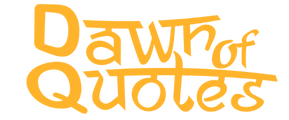What Was Time Before Modern Calendars?
Before the invention of the Gregorian calendar or digital clocks, humans still needed to track time. But how did they do it without numbered years, months, or even days? This blog dives into the ancient methods of timekeeping that shaped human civilization long before “January 1, Year 1” was ever marked.
1. Stonehenge: The Prehistoric Solar Calendar
One of the earliest known timekeeping structures is Stonehenge in Britain. Constructed over 4,000 years ago, its stones align with the sunrise on the summer solstice (June 21) and sunset on the winter solstice (December 21).
In 2022, archaeologist Timothy Darvill proposed that Stonehenge could have functioned as a solar calendar with 365 days. While debated, this theory reflects how ancient people observed celestial patterns to measure seasons and time.
SEO Keywords: Stonehenge calendar, prehistoric timekeeping, solar solstice alignment
2. Konark Sun Temple: India’s Astronomical Marvel
In India, the Konark Sun Temple in Odisha (13th century) exemplifies advanced timekeeping. The temple features 24 intricately carved wheels, which function as sundials. These wheels have major and minor spokes used to measure time in 3-hour and 1.5-hour intervals. Shadows cast by the sun on the spokes help determine the time of day.
Each wheel represents a month, symbolizing the deep connection between architecture, astronomy, and daily life in ancient India.
SEO Keywords: Konark Sun Temple, Indian sundials, ancient Indian timekeeping, solar architecture
3. Lunar and Solar Calendars: Moon Meets Sun
Ancient civilizations used the moon’s phases (29.5 days per cycle) to track months. This gave rise to the lunar calendar, which was crucial for rituals, agriculture, and festivals.
Meanwhile, the solar calendar tracked the Earth’s revolution around the sun (~365.25 days). Civilizations like the Egyptians and Romans used solar calendars to align with seasons.
India perfected the blend of both systems with the lunisolar calendar. It follows lunar months but syncs with the solar year by adding an intercalary month (Adhik Maas) every 32.5 months, ensuring seasonal alignment.
SEO Keywords: lunar calendar, solar calendar, lunisolar calendar, Adhik Maas, Hindu timekeeping
4. The Panchang: India’s Ancient Time Bible
The Panchang is the traditional Hindu calendar that combines:
- Tithi (lunar day)
- Vara (weekday)
- Nakshatra (constellation)
- Yoga (astrological combination)
- Karana (half-day period)
It’s used to determine auspicious timings (muhurat), festivals, and agricultural planning. This system dates back to the Vedanga Jyotish, an astronomical text from around 1200 BCE.
SEO Keywords: Panchang calendar, Hindu astrology, Indian time system, Vedanga Jyotish
5. Julian and Gregorian Calendar Reforms
The Julian calendar, introduced by Julius Caesar in 46 BCE, had 365 days and a leap year every 4 years. But it overestimated the solar year by 11 minutes.
By 1582, this error had added up to a 10-day shift. Pope Gregory XIII corrected it with the Gregorian calendar, which is now used worldwide. October 4, 1582, was directly followed by October 15.
Interesting fact: There was no year 0 between 1 BCE and 1 AD. Also, historical estimates suggest Jesus Christ may have been born between 4–6 BCE.
SEO Keywords: Julian calendar, Gregorian calendar reform, calendar history, leap year origin
6. Why Are There 12 Months and 365 Days?
- A Day: Earth’s one full rotation (24 hours)
- A Month: One lunar cycle (~29.5 days)
- A Year: One Earth revolution around the Sun (~365.25 days)
The 12-month division reflects early attempts to synchronize lunar cycles with solar seasons. Cultures settled on 12 months for symmetry with zodiac signs and agricultural needs.
SEO Keywords: why 12 months, origin of calendar structure, Earth revolution time
7. Time in Indian Cosmology: Yugas and Eternal Cycles
Indian philosophy didn’t view time as linear but cyclical. According to Hindu cosmology, the universe moves through four major epochs (Yugas):
- Satya Yuga
- Treta Yuga
- Dvapara Yuga
- Kali Yuga
Each Yuga lasts thousands to millions of years. Time is seen as cosmic rhythm, not merely seconds and minutes.
SEO Keywords: Yuga system, Indian cosmology, Hindu time cycle, Satya Yuga, Kali Yuga
Conclusion: Time Was Felt, Not Measured
Long before digital clocks or even written calendars, humanity used the sun, moon, stars, and shadows to track time. From Stonehenge to Konark, ancient civilizations were astronomers, mathematicians, and architects of time.
Today, as we follow our calendars and clocks, it’s worth remembering that timekeeping is as much an art as it is science. Our ancestors didn’t just count time — they lived by its natural rhythm.


